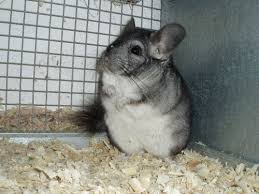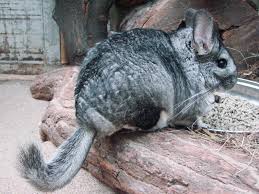Chinchillas are a type of small, furry rodent that are native to the Andes mountains of South America. There are two species of chinchillas: the long-tailed chinchilla and the short-tailed chinchilla. Both species are currently listed as endangered by the International Union for Conservation of Nature (IUCN).
Chinchillas are highly valued for their soft, dense fur, which has made them a popular target for the fur trade. They were once widespread throughout the Andes, but overhunting and habitat loss have led to a dramatic decline in their population.
In addition, chinchillas are vulnerable to diseases such as chinchilla fur slip syndrome, which can be fatal. Efforts to conserve chinchillas have included measures such as banning the international trade in chinchilla fur, creating protected areas for chinchilla habitat, and captive breeding programs.
However, chinchillas continue to face threats such as habitat loss, hunting by humans, and predation by introduced species such as foxes and cats. The conservation status of chinchillas remains precarious, and continued efforts are needed to ensure their survival in the wild.
Chinchillas are considered to be endangered. Both species of chinchillas, the long-tailed chinchilla and the short-tailed chinchilla, are listed as endangered by the International Union for Conservation of Nature (IUCN).
The main threats to chinchillas are habitat loss due to agriculture, mining, and urbanization, as well as hunting for their fur, which is highly valued in the fashion industry.
In addition, chinchillas are vulnerable to diseases and predation by introduced species such as foxes and cats. Efforts are being made to conserve chinchillas, including captive breeding programs and the creation of protected areas for their habitat, but their populations continue to decline.
Read Also: Wild Raccoon: History, Description and Nutrition
Reasons why Chinchilla are Endangered

Chinchillas are endangered due to several factors, including habitat loss, hunting, and disease. Below are some of the main reasons why chinchillas are endangered:
Habitat loss: Chinchillas are native to the Andes mountains in South America, but their habitat is being destroyed by human activities such as agriculture, mining, and urbanization. As their habitat shrinks, chinchillas are left with fewer places to live and breed.
Hunting: Chinchillas have long been hunted for their soft, dense fur, which is highly valued in the fashion industry. Overhunting has led to a decline in chinchilla populations, especially in the early 20th century when chinchilla fur was in high demand.
Disease: Chinchillas are susceptible to a number of diseases, including chinchilla fur slip syndrome, which can be fatal. This disease can be spread through contact with infected animals, contaminated bedding, or contaminated feed.
Predation: Introduced species such as foxes and cats have been introduced into chinchilla habitats and have become predators of the chinchilla.
Climate change: The Andes mountains are experiencing changes in temperature and precipitation patterns due to climate change, which can impact chinchilla habitats and food sources.
Inbreeding: Chinchilla populations have become fragmented and isolated due to habitat loss and other factors, which can increase the risk of inbreeding and reduce genetic diversity.
These factors have combined to make chinchillas an endangered species, and efforts are being made to conserve their populations and their habitat.
Possible Solutions
There are several possible solutions to chinchilla endangerment, which can help to protect and conserve chinchilla populations. Here are some possible solutions:
Habitat protection: One of the most important solutions to chinchilla endangerment is to protect their habitat. This can be done by creating protected areas, such as national parks or reserves, where chinchillas can live and breed without disturbance from human activities.
Regulation of the fur trade: To reduce the demand for chinchilla fur and protect chinchilla populations, the fur trade can be regulated through laws and policies that limit or prohibit its sale and use.
Captive breeding programs: Captive breeding programs can help to increase chinchilla populations and ensure genetic diversity. These programs can be run by zoos, research institutions, or private breeders, and can be used to reintroduce chinchillas to the wild.
Disease prevention and management: To protect chinchillas from diseases, preventative measures can be taken such as regular health checks, vaccination, and the use of clean bedding and feed. In the case of outbreaks, quarantine and treatment measures can be implemented to prevent the spread of disease.
Management of introduced species: To reduce predation by introduced species such as foxes and cats, management strategies such as trapping and removal, fencing, or the use of guard animals can be implemented.
Education and awareness: Public education and awareness campaigns can help to raise awareness about the importance of chinchilla conservation and reduce human impact on chinchilla habitats. This can include educational programs in schools, outreach to local communities, and media campaigns.
In addition, a combination of these solutions can be implemented to help protect and conserve chinchilla populations and their habitats.
Read Also: List of Plantain Cultivars (Musa spp.)
The fragmentation of Chinchilla Habitats and its impact on Chinchilla Survival

The fragmentation of chinchilla habitats has a significant impact on chinchilla survival. Chinchillas require a specific type of habitat to survive, which is characterized by steep, rocky terrain with sparse vegetation.
This habitat is found in the Andes mountains of South America, where chinchillas have adapted to survive in the harsh, arid conditions. However, human activities such as mining, agriculture, and urbanization have caused significant habitat fragmentation in the Andes.
This fragmentation occurs when large areas of habitat are divided into smaller, isolated patches by human development. The result is that chinchilla populations become fragmented and isolated, which can have several negative impacts on their survival:
Reduced gene flow: Fragmentation can prevent chinchillas from moving between populations, which can reduce genetic diversity and increase the risk of inbreeding. This can lead to reduced fitness and increased vulnerability to disease and other threats.
Reduced habitat quality: Fragmented habitats may not provide adequate food, water, or shelter for chinchillas, which can reduce their overall fitness and reproductive success.
Increased predation risk: Fragmented populations are often smaller and more vulnerable to predation by introduced species such as foxes and cats, which can reduce chinchilla populations and their ability to reproduce.
Reduced population size: Fragmentation can lead to smaller chinchilla populations, which are more vulnerable to random events such as disease outbreaks or environmental catastrophes. This can increase the risk of population extinction.
To address the impact of fragmentation on chinchilla survival, conservation efforts can focus on reconnecting fragmented habitats and creating corridors that allow chinchillas to move between populations. This can be done by restoring degraded habitat, removing barriers to movement, and creating protected areas that connect existing populations.
By increasing habitat connectivity, chinchillas can have access to larger areas of suitable habitat, which can improve their chances of survival and reduce the risk of population extinction.
Read Also: 15 Best Investments to Try Out
Frequently Asked Questions
We will update this section soon.

